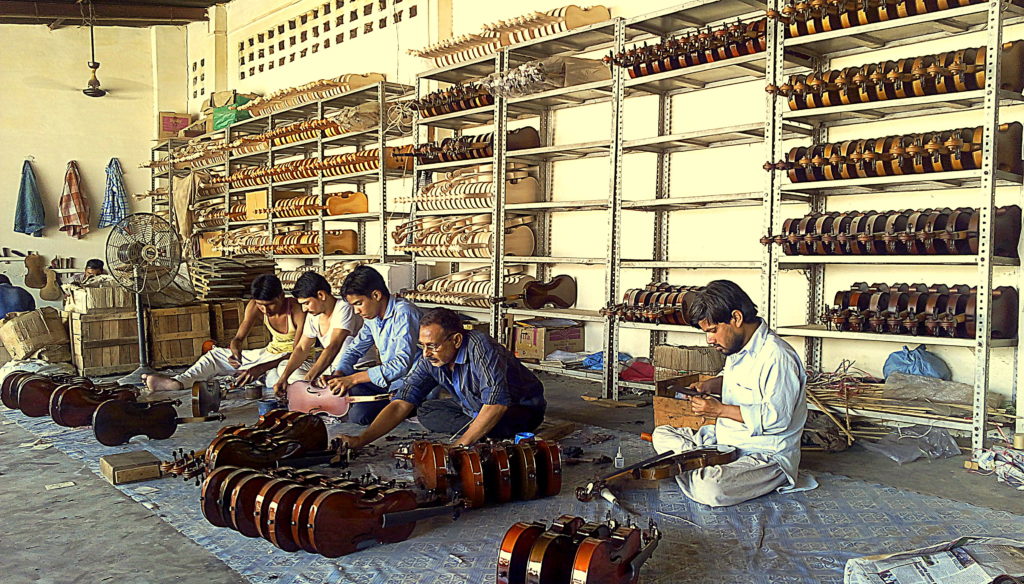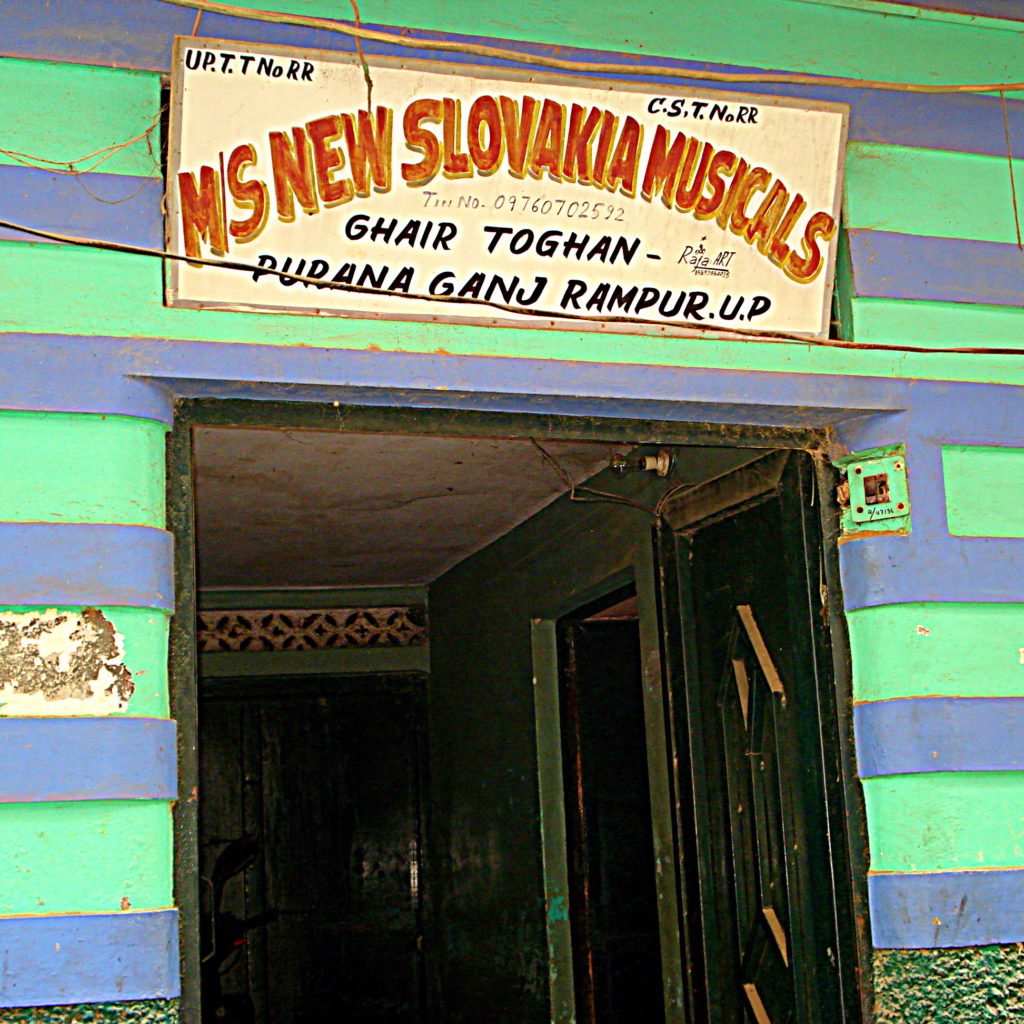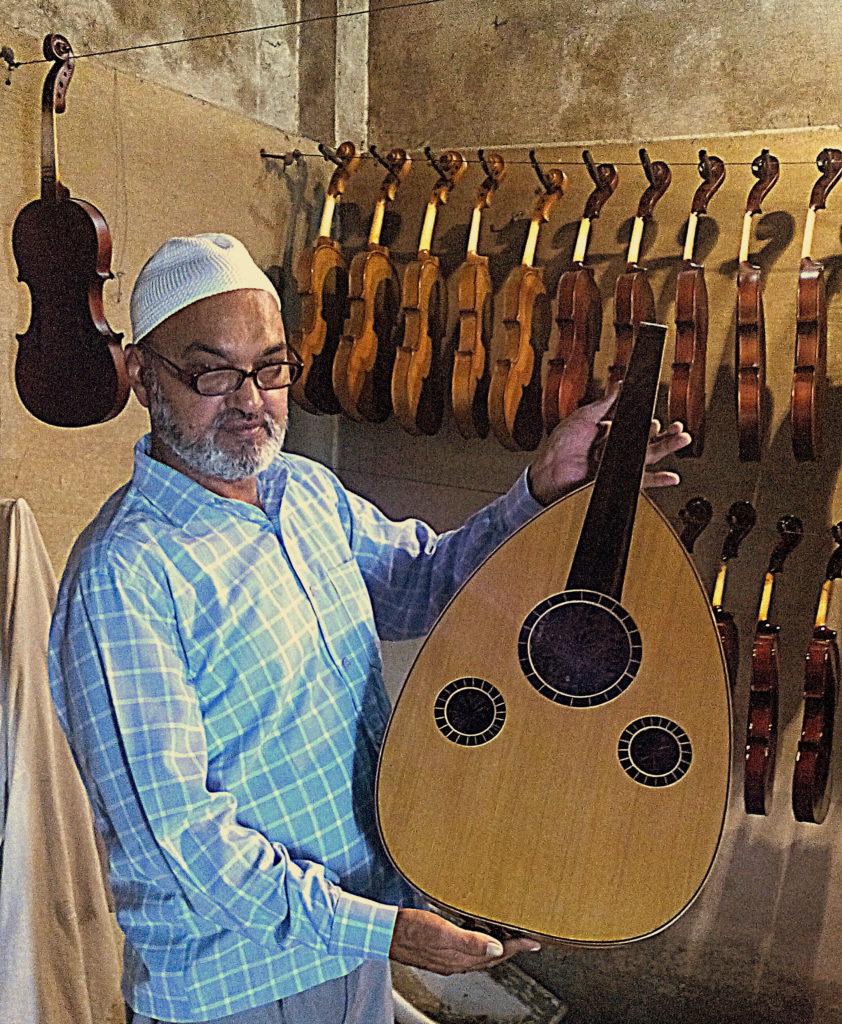Rampur, UTTAR PRADESH :

Zamiruddin’s old house in Purana Gunj, Rampur, a town 175 km east of New Delhi, is as nondescript as they come. But enter it and you might just find yourself transported, musically, to ancient Egypt.
Stacked on the shelves and lofts in rooms around the house’s rectangular courtyard are ouds, a musical instrument dating back thousands of years to the time of the Pharaohs.
This is the only place in India where you can buy an oud, a short-necked, pear-shaped stringed instrument that produces a sound similar to that of the sarod. The oud is oft used in Middle Eastern and North African music.
“My father [Haseenuddin] was the first and only person in India to make ouds,” said Zamiruddin, owner of New Slovakia Musicals. “Now, I am the only one…”
How the oud came to India
The oud dates back to ancient Egpyt. When it came to be used in Persia, some 3000 years ago, it was called the barbat, while it was called the al Oud (wood, or specifically thin wood) by the Arabs.
The oud came to India with the spread of Islam. In his book Two Nations and Kashmir (1956), Lord Birdwood notes that it was during the rule of Zain-ul-Abuldin in Kashmir that musicians from the West Asian region came, and brought the lute and the oud with them.
Discovering the instrument: Haseenuddin’s story

Once a cabinet-maker in Rampur, the lyrical story of how Haseenuddin started making ouds goes back 70-odd years.
“My father and his younger brother Ameeruddin lived together. In 1942, my uncle visited Bombay and bought a violin. He became so engrossed in playing it day in and day out that he completely detached from his surroundings,” recalled Zamiruddin.
One day, Ameeruddin accidentally dropped the violin and it shattered to pieces. Heartbroken, he continued to become more and more miserable as the weeks passed. Unable to see his brother in that state, Haseenuddin then studied the violin that had become a tangled lump of wood and strings, Zamiruddin told me.
“My father was a genius. Using his skills and things available at hand, he made a new violin for my uncle.”
Seeing the joy on Ameeruddin’s face made Haseenuddin realise his latent potential in making the instrument. “Along with chairs, tables, beds, and wardrobes, he started making violins on a large scale. The year was 1947.”
Gradually, the demand for violins soared so high that Haseenuddin gave up making furniture and concentrated only on the instrument, becoming an established violin-maker in India. His violins had a big market in Goa, Kerala, Tamil Nadu and Karnataka, where music was a big part of the school curriculum.
Zamiruddin started assisting his father soon after finishing his graduation.
Then came the oud

“Some people visited us with an oud in 1984 and introduced themselves as dealers and exporters of musical instruments. They showed the stringed instrument to my father and asked if he could make it and said that every other craftsman in India had refused to,” said Zamiruddin.
Haseenuddin, who had already made a name for himself by making quality violins, was up to the challenge.
“I advised my father against it, owing to the oud’s complicated design. He, however, chided me and said I should never doubt the skills of a master craftsman. His first oud was a success, after which we started producing them on a large scale—120-odd ouds a month,” reminisced Zamiruddin.
During that time, the ouds were exported to Syria, Iraq, Lebanon, and other Middle Eastern countries. “Ouds are made in the Middle East, but my product is better. India has a variety and better quality of wood compared to the Gulf, which is a desert. Also, my ouds are cheaper. An oud made in Syria may cost Rs 80,000, but mine are Rs 18,000 a piece,” said Zamiruddin, who inherited the business in 1996 after his father passed away.
Yet, despite the many pluses his ouds have, he has no immediate plans to export them to foreign markets, given the low returns.
According to him, no two ouds are the same, neither in dimensions nor the sound they produce. “Ouds are handmade. So, something that has been cut and carved by hand won’t have the precision of machines. Hence, every oud is unique, even if made by the same craftsman.”
Spreading the music
Zamiruddin uses the backyard of his house as his workshop, where 30-odd workmen sit cross-legged on the floor, designing violins and ouds. At any point, he has about 40 ouds ready.
Although the ouds do not sell as much as the other musical instruments, Zamiruddin has found many buyers online. “Connoisseurs of music contact me online. Two months back, I even sold one to a person from Mumbai,” he said.
So, although not as well known as its more famous stringed siblings, the oud may yet find a wider market and fanbase.
Rohit Ghosh is an independent journalist based in Kanpur.
source: http://www.qrius.com / Qrius / Home> Music / by Rohit Ghosh / February 19th, 2002








